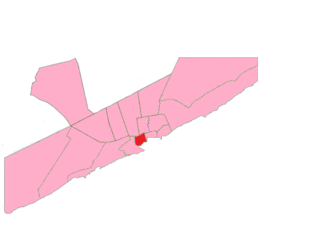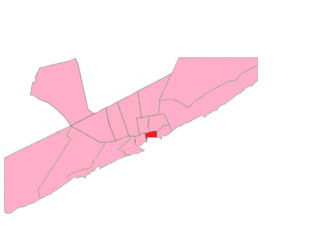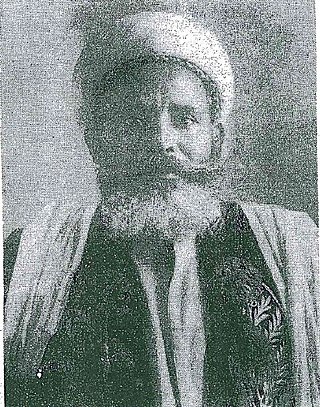
Sudano-Sahelian architecture refers to a range of similar indigenous architectural styles common to the African peoples of the Sahel and Sudanian grassland (geographical) regions of West Africa, south of the Sahara, but north of the fertile forest regions of the coast.

The Banaadiri people are a people group in Somalia. Banaadiris largely inhabit Somalia's southern coastline.

The Grand Mosque of Mopti, also known as Komoguel Mosque, is a mosque located in the city of Mopti, in the Mopti Region of Mali.

Hamar Weyne District is a district in the southeastern Banaadir region of Somalia. It includes a part of central Mogadishu. Hamar Weyne is the oldest district with in Mogadishu and up until 1938 the city of Mogadishu was made up of Shingani and Hamar Weyne.Somali word "xamar" means tamarind tree.

Shangani District is a district in the southeastern Banaadir region of Somalia. It lies in central Mogadishu. Shingani along with Hamar Weyne are the oldest districts in Mogadishu. Shangani means On the sand in Swahili, as this district was originally a Benadir settlement.

The Arba'a Rukun Mosque, also known as Arba Rucun, is a mosque in the Shangani medieval district of Mogadishu, Somalia.

Xamar Weyne's Friday mosque is said to be one of the oldest mosques in Mogadishu and in Africa.
Shingani's Friday mosque is said to be one of the oldest mosques in Mogadishu and in Africa. Historically, Jamacaha Shingani is the most important building in the historical quarter of Shingani.
The Awooto Eeday Mosque is a small mosque located in one of the old historical alleyways of Hamar Weyne in Mogadishu.
The 'Adayga Mosque also known as Aw Musse mosque or Haji Musse mosque is small mosque in the historical Hamar Weyne district in Mogadishu.
Mohamed Al Taani Masjid is a mosque in the medieval Hamar Weyne district of Mogadishu, Somalia.
Sheikh Rumani Ba 'Alawi Masjid is a small mosque found in the historical Hamar Weyne district in Mogadishu.
The Aw Mukhtar & Aw Sheikh Omar also known as the Twin Mosques is now a large mosque in the historical Hamar Weyne district in Mogadishu.
The Sheikh Ahmed Sharif Mosque is small mosque in the historical Shangani District in Mogadishu.
Reer Faqay is a Somali clan and a Benadiri sub clan. It is primarily found in the southern coastal cities of Mogadishu, Marka, Baraawe and Kismayo. They established communities in the hinterlands in towns such as Afgooye, Baidoa, Diinsoor and Bardheere.
'Shanshiyo or Shaanshi is a Banaadiri clan, mainly from the southern coastal cities of Mogadishu, Marka, Baraawe and Kismayo which established communities in the hinterlands in towns such as Baidoa and Diinsoor due to trading.

Sharif Aydarus Sharif Ali Al-Nadheeri or short Sharif Aydarus was a famous scholar of Islamic and Somali history and pan-Islamic leader.
Sanje ya Kati is a protected, uninhabited historic site located on Sanje ya Kati Island in Pande Mikoma ward in Kilwa District, Lindi Region of Tanzania's Indian Ocean coast. The site is home to medieval Swahili ruins that have yet to be fully excavated.
Ali Jimale Mosque is a mosque located in Mogadishu, Somalia.









